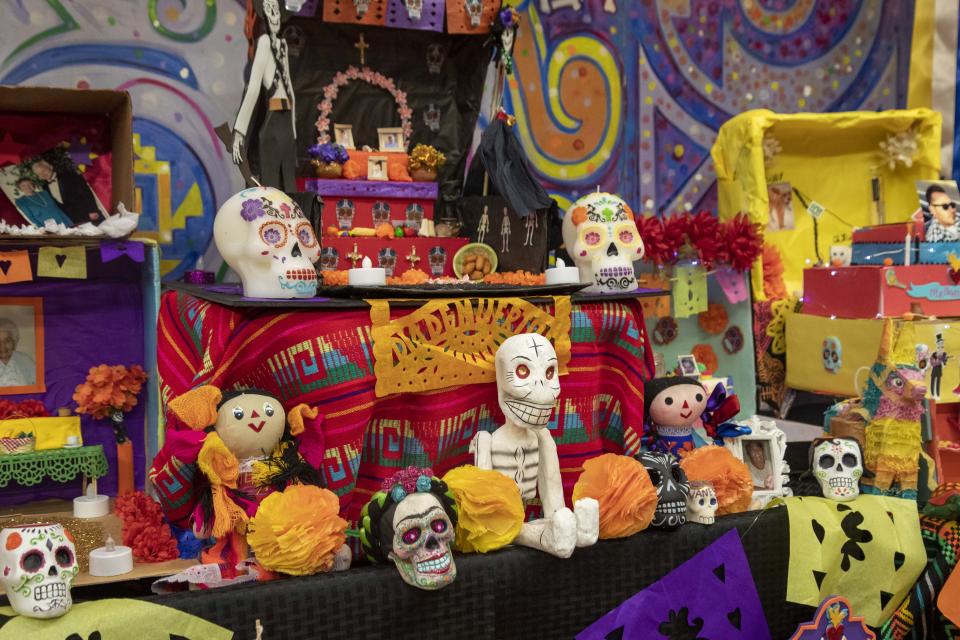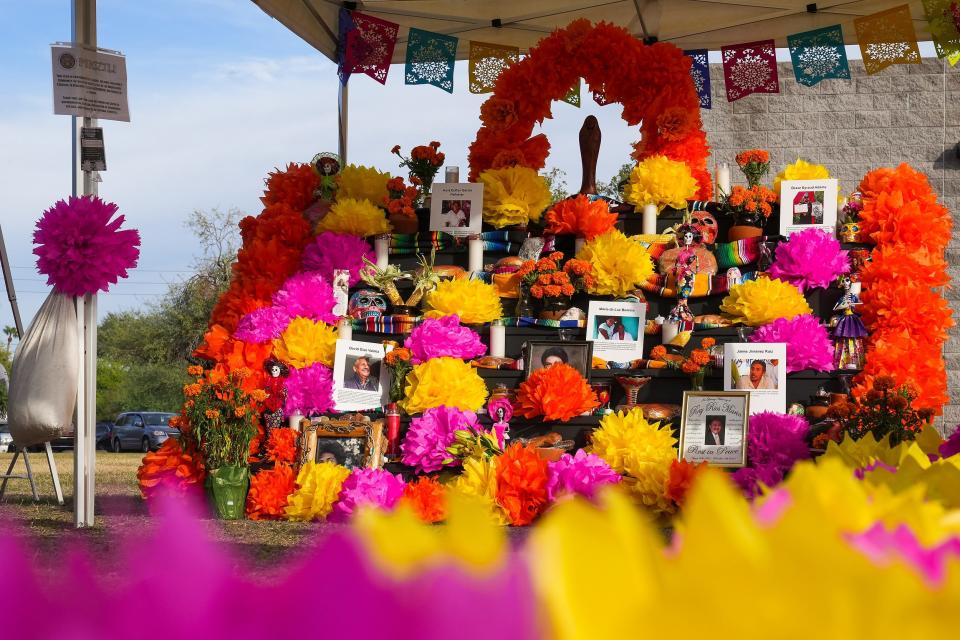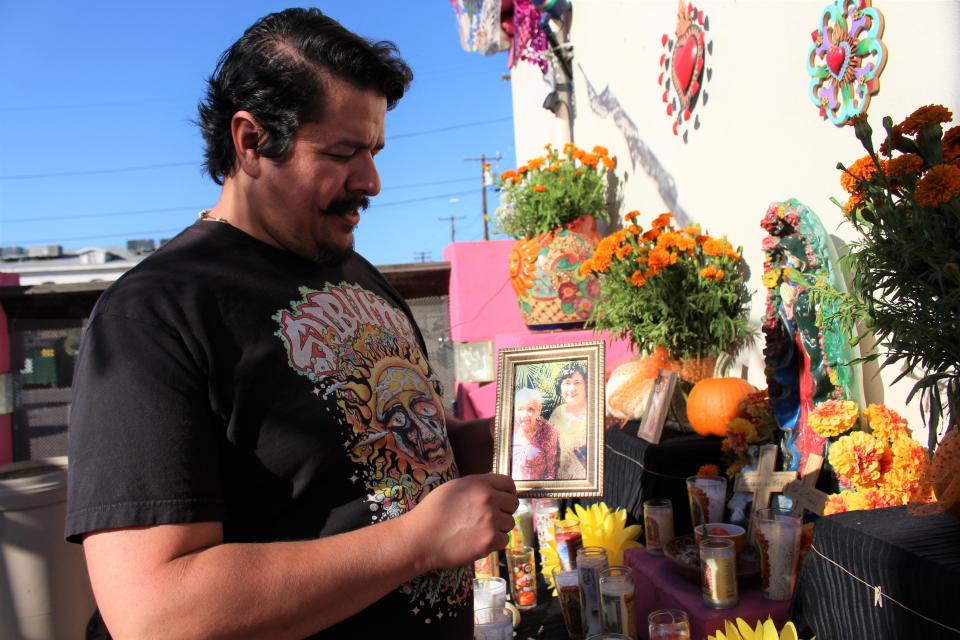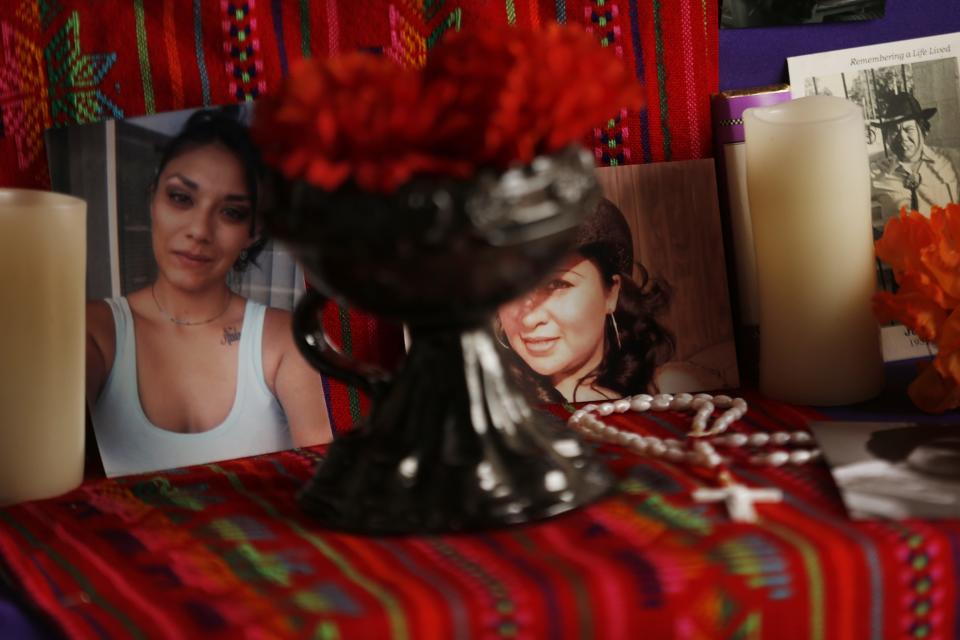Dia de los Muertos: How to make an ofrenda and what traditionally goes on one
The famous Mexican holiday Día de los Muertos, also known as the Day of the Dead, is a celebration and honoring of departed loved ones. You’ll find traditional foods and parades but the focal point of the holiday is the ofrenda, or altar.
The ofrenda pays tribute and shows respect to ancestors and deceased family members. It is a means of maintaining a strong connection with the past, acknowledging the influence of those who came before and expressing gratitude for their guidance and support.
The altar embodies the central theme of Día de los Muertos, which is the celebration of life rather than the fear of death. It serves as a reminder that death is a natural part of the human experience and that the spirits of the deceased should be joyfully welcomed and celebrated.
Here's everything to know about making a Día de los Muertos ofrenda.
Skulls, ofrendas and marigolds: Here's how Day of the Dead is celebrated in Mexico
What is an ofrenda?

An ofrenda is an essential element of the Día de los Muertos celebration. Also known as an altar, it is a special offering or tribute to deceased loved ones. The ofrenda welcomes the spirits of the departed back to the world of the living and represents thousands of years of history.
“With regards to ancient Indigenous Mexico, which is to say pre-Hispanic Mesoamerica, the offerings were often central to this celebration and I would say in ancient Mesoamerica, there's a dual component to their rituals for the dead. One is a private component that takes place in the home,” said Mathew Sandoval, associate teaching professor at Barrett the Honors College at Arizona State University.
The second component, Sandoval said, involves celebrating outside of the home with the larger community.
“Ofrendas have generally in ancient Mesoamerica been a part of both, which is to say that you'll make an offering to your own personal dead in your home, and you will also gather with your community to pay homage to the ancestors collectively, more generally in the community as a whole,” Sandoval said.
How to make an ofrenda

Creating an altar for Día de los Muertos is a meaningful and personal process. There are no strict rules. Here are some guidelines and items to include:
Choose a suitable location, such as a table, shelf or any elevated surface.
Gather photos and personal items of the loved one.
Decorate with marigolds.
Include candles, sugar skulls and favorite foods and beverages.
Papel picado (colorful paper banners).
Religious symbols.
Burn incense.
Nameplates or notes.
What is traditionally on ofrenda?
While the specific elements of an ofrenda vary based on regional traditions and personal preferences, some common components include:
Photographs: Pictures of the loved ones are placed on the altar. Photographs help connect the spirits with their families and serve as a reminder of the people being celebrated.
Candles: An essential part of the ofrenda, they represent the presence of the spirits and serve as a guiding light to help them find their way back to the living world.
Marigolds (Cempasúchil): Marigold flowers are an integral part of the altar. Their vibrant colors and scent are believed to lead the spirits to the altar. “If you've smelled them, they're a very fragrant flower. They're also quite abundant in central Mexico," Sandoval said. "Therefore, it makes absolute sense that because of its fragrance, because of its beauty, because of its sheer abundance that would be something that you place on the altar because it's everywhere around you.”
Food and beverages: “Ancient Indigenous Mexicans believed that when the dead came back, they had to be satiated in some way. This is truly part of the way of thinking that they have traveled a long way. Therefore, they have to be taken care of through water, through food," said Sandoval.
Sugar skulls: Sugar skulls, or calaveras de azúcar, are decorative edible skulls made of sugar or chocolate. They symbolize the sweetness of life and are often inscribed with the names of the deceased.
Papel picado: Colorful, intricately cut paper banners known as papel picado are hung around the altar. They add a festive touch.
Personal belongings: Items that belonged to the deceased, such as jewelry or treasured possessions, are often placed on the ofrenda. These items help create a connection and evoke memories of the loved ones.
Religious symbols: Objects such as crucifixes, depictions of saints or images of the Virgin Mary may be included to represent the spiritual aspect of the celebration.
Incense: Incense is burned to create a pleasant aroma and purify the space, welcoming the spirits to the altar.
What are the 4 elements of an ofrenda?

“Often there's a relationship on the altar to the four elements, which is to say, wind, water, earth and fire, and those have different representations," Sandoval said.
"The earth is often represented through the flowers and or the food; the wind is through the papel picado. The water, of course, being any liquid, for most Chicanos now, it's not just water it could be beer or any alcohol. Then, in terms of fire, you'll have the candles or incense.”
Sandoval said many ofrendas today don't rely on the traditional elements — they represent the creativity of their makers.
“Many altars in Mexico now are hyper funky. You won't find any of those elements on there because now they're creating altars that are closer to contemporary art installations," Sandoval said.
"Like how funky can you get? How much can you honor the person who you're actually honoring? You don't necessarily need to include all four elements or even need those very traditional elements. I would say in my observation over the last several years, not everybody always uses that.”
What is the purpose of an ofrenda?
The ofrenda holds deep cultural and spiritual significance. The main purposes of the ofrenda include:
Honoring ancestors.
Welcoming the spirits.
Celebrating life and death.
Strengthening family bonds.
Cultural preservation.
Spiritual connection.
“Aztecs and Mayans believe that the ancestors operated very similarly to the way that we might think of saints operating in the Catholic religion, which is to say, if you pay homage, if you pay offerings, if you take care of the saint, the saint will take care of you,” Sandoval said.
“If you make offerings to the ancestors, they will make sure that you have a good harvest, they will make sure that you have a good year. So it's not just an offering that's an offering. It's an offering of like, ‘Hey if I do this for you, you can help me in some way too.’ So there's that deep relationship.”
What are the 3 levels of an ofrenda?

A typical Día de los Muertos altar typically consists of three tiers, although the number of tiers can vary depending on space, personal preference and regional custom. Each tier represents a specific symbolic level and serves a distinct purpose in honoring the deceased. The three-tiered structure is commonly known as los tres niveles, or the three levels. Here's what the three tiers signify:
Upper tier: The top tier represents the heavens or the spiritual realm. This is where religious symbols such as crosses, crucifixes, images of saints or the Virgin Mary, are placed. This tier symbolizes the connection between the departed souls and God or the divine.
Middle tier: The middle tier is where photographs of the deceased are displayed. This is the heart of the ofrenda. The photographs allow the spirits to recognize and be welcomed by their families during their visit.
Lower tier: The bottom tier represents the earthly world and the physical offerings to nourish the spirits during their journey. It is where food, beverages, candles, sugar skulls, marigold flowers and other offerings are placed.
In addition to the three main tiers, some altars may have additional shelves or levels to accommodate more photographs, offerings or mementos. Families make each altar unique and reflective of the individual being honored.
When to set up the ofrenda?
A Day of the Dead altar is typically set up in the days leading up to the celebration, which takes place on Nov. 1 and 2. The exact timing varies based on personal preferences and regional customs.
How long does the ofrenda stay up?
The length of time the ofrenda stays up depends on personal preference, family tradition and regional customs. Families have the flexibility to decide the duration that feels most meaningful to them. The ofrenda is typically kept in place for several days, usually until Nov. 2 or shortly thereafter.
Got a story you want to share? Reach out at Tiffany.Acosta@gannett.com. Follow @tiffsario on Instagram.
Support local journalism and subscribe to azcentral.com.
This article originally appeared on Arizona Republic: Day of the Dead altar: How to make a Dia de los Muertos ofrenda

